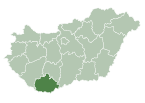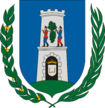
Austria-Hungary, often referred to as the Austro-Hungarian Empire or the Dual Monarchy, was a constitutional monarchy and great power in Central Europe between 1867 and 1918. It was formed with the Austro-Hungarian Compromise of 1867 and was dissolved following its defeat in the First World War.

The Central Powers, also known as the Central Empires, was one of the two main coalitions that fought World War I (1914–18). It consisted of Germany, Austria-Hungary, the Ottoman Empire and Bulgaria; hence it is also known as the Quadruple Alliance. Colonies of these countries also fought on the Central Powers' side such as the Micronesia and German East Africa, until almost all of their colonies were occupied by Allies.

Hungary is a landlocked country in Central Europe. Spanning 93,030 square kilometres (35,920 sq mi) of the Carpathian Basin, it is bordered by Slovakia to the north, Ukraine to the northeast, Romania to the east and southeast, Serbia to the south, Croatia and Slovenia to the southwest, and Austria to the west. Hungary has a population of 10 million, mostly ethnic Hungarians and a significant Romani minority. Hungarian, the official language, is the world's most widely spoken Uralic language, and among the few non-Indo-European languages widely spoken in Europe. Budapest is the country's capital and largest city; other major urban areas include Debrecen, Szeged, Miskolc, Pécs, and Győr.
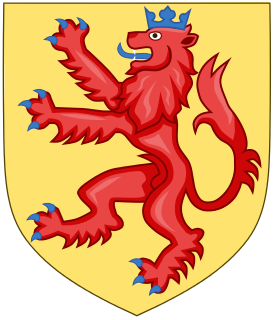
The House of Habsburg or Hapsburg, also known as the House of Austria, was one of the most prominent royal houses of Europe in the 2nd millennium.

Hungarian is a Uralic language spoken in Hungary and parts of several neighbouring countries. It is the official language of Hungary and one of the 24 official languages of the European Union. Outside Hungary, it is also spoken by communities of Hungarians in present-day Slovakia, western Ukraine (Subcarpathia), central and western Romania (Transylvania), northern Serbia (Vojvodina), northern Croatia, northeastern Slovenia and eastern Austria.
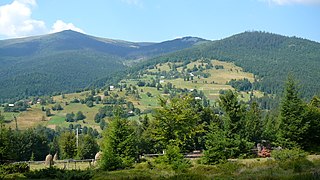
Transylvania is a historical region that is located in central Romania. Bound on the east and south by its natural borders, the Carpathian mountain range, historical Transylvania extended westward to the Apuseni Mountains. The term sometimes encompasses parts of the historical regions of Crișana and Maramureș, and occasionally the Romanian part of Banat.

Budapest is the capital and the most populous city of Hungary, and the ninth-largest city in the European Union by population within city limits. The city has an estimated population of 1,752,286 over a land area of about 525 square kilometres. Budapest is both a city and county, and forms the centre of the Budapest metropolitan area, which has an area of 7,626 square kilometres and a population of 3,303,786, comprising 33% of the population of Hungary.

Franz Joseph I or Francis Joseph I was Emperor of Austria, King of Hungary, Croatia, and Bohemia, and monarch of other states of the Austro-Hungarian Empire, from 2 December 1848 until his death. From 1 May 1850 to 24 August 1866 he was also President of the German Confederation. He was the longest-reigning ruler of Austria and Hungary, as well as the sixth-longest-reigning monarch of any country in history.
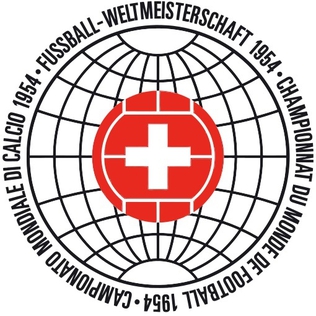
The 1954 FIFA World Cup was the fifth edition of the FIFA World Cup, the quadrennial international football tournament for senior men's national teams of the nations affiliated to FIFA. It was held in Switzerland from 16 June to 4 July. Switzerland was selected as the host country in July 1946. At the tournament several all-time records for goal-scoring were set, including the highest average number of goals scored per game. The tournament was won by West Germany, who defeated tournament favourites Hungary 3–2 in the final, their first World Cup title.
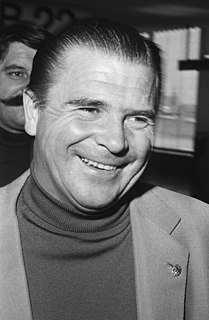
Ferenc Puskás was a Hungarian football player and manager, widely regarded as one of the greatest players of his generation and the sport's first international superstar. A forward, he scored 84 goals in 85 international matches for Hungary, played four international matches for Spain and scored 514 goals in 529 matches in the Hungarian and Spanish leagues. He became an Olympic champion in 1952 and led his nation to the final of the 1954 World Cup. He won three European Cups, 10 national championships and eight top individual scoring honors. In 1995, he was recognized as the greatest top division scorer of the 20th century by the IFFHS. With 808 goals in 794 official games scored during his career, he is the third top goalscorer of all time.

The Treaty of Trianon was prepared at the Paris Peace Conference and was signed in the Grand Trianon Palace in Versailles on 4 June 1920. It formally ended World War I between most of the Allies of World War I and the Kingdom of Hungary. French diplomats played the major role in designing the treaty, with a mind to establishing French-led coalition of the newly formed nations. It regulated the status of the independent Hungarian state and defined its borders generally within the ceasefire lines established in November–December 1918 and left Hungary as a landlocked state that included 93,073 square kilometres (35,936 sq mi), 28% of the 325,411 square kilometres (125,642 sq mi) that had constituted the pre-war Kingdom of Hungary. The truncated Kingdom had a population of 7.6 million, 36% compared to the pre-war kingdom's population of 20.9 million. Though the areas that were allocated to neighbouring countries had a majority of non-Hungarians, in them lived 3.3 million Hungarians – 31% – who were now in a minority status. The treaty limited Hungary's army to 35,000 officers and men, and the Austro-Hungarian Navy ceased to exist. These decisions and their consequences have been the cause of deep resentment in Hungary ever since.
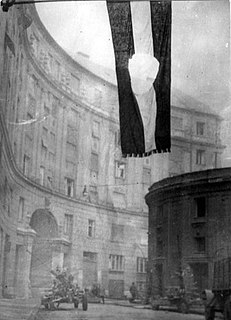
The Hungarian Revolution of 1956, or the Hungarian Uprising, was a nationwide revolution against the Hungarian People's Republic and its Soviet-imposed policies, lasting from the 23rd of October until the 10th of November 1956. Leaderless at the beginning, it was the first major threat to Soviet control since the Red Army drove Nazi Germany from its territory at the End of World War II in Europe.

The Hungary national football team represents Hungary in men's international football and is controlled by the Hungarian Football Federation. The team has made nine appearances in the FIFA World Cup finals and four appearances in the European Championship, and plays its home matches at the Puskás Aréna, which opened in November 2019.

Viktor Mihály Orbán is a Hungarian politician who has been Prime Minister of Hungary since 2010; he was also Prime Minister from 1998 to 2002. He has also been President of Fidesz, a national conservative political party, since 1993, with a brief break between 2000 and 2003.

The Kingdom of Hungary was a monarchy in Central Europe that existed from the Middle Ages into the 20th century and existed for almost a millennium. The Principality of Hungary emerged as a Christian kingdom upon the coronation of the first king Stephen I at Esztergom around the year 1000; his family led the monarchy for 300 years. By the 12th century, the kingdom became a European middle power within the Western world.

Habsburg Monarchy, or Danubian Monarchy, or Habsburg Empire is a modern umbrella term coined by historians to denote the numerous lands and kingdoms of the Habsburg dynasty, especially for those of the Austrian line. Although from 1438 to 1806, a member of the House of Habsburg was also Holy Roman Emperor, the Holy Roman Empire itself is not considered to have been part of what is now called the Habsburg Monarchy.

World War I or the First World War, often abbreviated as WWI or WW1, was a global war originating in Europe that lasted from 28 July 1914 to 11 November 1918. Contemporaneously known as the Great War or "the war to end all wars", it led to the mobilisation of more than 70 million military personnel, including 60 million Europeans, making it one of the largest wars in history. It also was one of the deadliest conflicts in history, with an estimated 8.5 million combatant deaths and 13 million civilian deaths as a direct result of the war, while resulting genocides and the related 1918 Spanish flu pandemic caused another 17–100 million deaths worldwide, including an estimated 2.64 million Spanish flu deaths in Europe and as many as 675,000 in the United States.
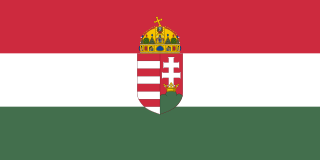
The Kingdom of Hungary, sometimes referred to as the Regency or the Horthy era, existed as a country from 1920 to 1946 under the rule of Regent Miklós Horthy. Horthy nominally represented the Hungarian monarchy. In reality there was no king. Attempts by Charles IV to return to the throne were prevented by Horthy.
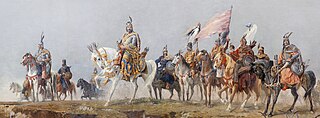
Hungarians, also known as Magyars, are a nation and ethnic group native to Hungary and historical Hungarian lands who share a common ancestry, culture, history and language. Hungarian belongs to the Uralic language family. There are an estimated 14.2–14.5 million ethnic Hungarians and their descendants worldwide, of whom 9.6 million live in today's Hungary. About 2.2 million Hungarians live in areas that were part of the Kingdom of Hungary before the Treaty of Trianon in 1920 and are now parts of Hungary's seven neighbouring countries, Slovakia, Ukraine, Romania, Serbia, Croatia, Slovenia, and Austria. Significant groups of people with Hungarian ancestry live in various other parts of the world, most of them in the United States, Canada, Germany, France, the United Kingdom, Brazil, Australia, and Argentina.
Hungary in its modern (post–1946) borders roughly corresponds to the Great Hungarian Plain . During the Iron Age, it was located at the crossroads between the cultural spheres of the Celtic Tribes, Dalmatian Tribes and the Germanic Tribes.


